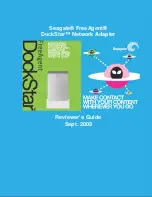
240 Administering FICON fabrics
authenticated using digital certificates and unique private keys provided to the Switch Link
Authentication Protocol (SLAP).
•
Switch binding
is a security method for restricting devices that connect to a particular switch. If the
device is another switch, this is handled by the SCC policy. If the device is a host or storage device, the
Device Connection Control (DCC) policy binds those devices to a particular switch. Policies range from
completely restrictive to reasonably flexible, based upon customer needs.
•
Port binding
is a security method for restricting host or storage devices that connect to particular switch
ports. The DCC policy also binds device ports to switch ports. Policies range from completely restrictive
to reasonably flexible, based upon customer needs.
For switches running Fabric OS 5.2.x and higher, the SCC ACL with strict fabric-wide consistency can also
be used for switch binding, in addition to the Secure Fabric OS mechanism.
Supported switches
FICON protocol is supported on the following models and Fabric OS releases:
•
SAN Switch 2/32, Fabric OS v4.1.2 or later.
•
SAN Switch 4/32, Fabric OS v5.0.1b or later.
•
SAN Director 2/128, Fabric OS v4.2.0 or later. The default one-domain configuration is supported;
dual domain configurations and mixed FC4-16 port blade configurations are not supported.
•
4/256 SAN Director, Fabric OS v5.0.1b or later. A single-domain configuration is supported with a
mix of 16-port and 32-port blades. Dual-domain configurations are not supported. Mixed port blade
configurations of SAN Director 2/128 and 4/256 SAN Director port blades (FC2-16, FC4-16, or
FC4-32) in the same director are not supported in a FICON environment.
The following port blades can exist in a FICON environment; however, FICON device connection to
ports on these blades is not supported:
NOTE:
At the time of this document’s release, HP does not support the FC4-16IP blade. Consult
http://www.hp.com
for the latest, updated information.
• FC4-16IP
• FC4-48
• FR4-18i
In an Admin Domain-enabled fabric, you should put all of the ports on these blades in an Admin
Domain other than the one used for FICON ports. The ports on these blades should not belong to the
zone in which FICON devices are present.
The FC4-48 port blade is not supported for connecting to System z environments via FICON channels
or via FCP zLinux on System z. To connect to the System z environment with the 4/256 SAN Director,
use the FC4-16 or FC4-32 port blades.
4/256 Director and SAN Switch 4/32 FICON notes
Both the 4/256 SAN Director and 4100 require the port-based routing policy either in a single switch
configuration, or a cascaded switch configuration on switches in the fabric that have FICON devices
attached (option 1 of the
aptPolicy
command). Other switches in the fabric can use the default
exchange-based routing policy (option 3 of the
aptPolicy
command) only when Open Systems devices
are attached to those switches.
Some switches require the port-based routing policy either in a single switch configuration, or a cascaded
switch configuration on switches in the fabric that have FICON devices attached (option 1 of the
aptPolicy
command). Other switches in the fabric can use the default exchange-based routing policy
(option 3 of the
aptPolicy
command) only when Open Systems devices are attached to those switches.
Summary of Contents for AE370A - Brocade 4Gb SAN Switch 4/12
Page 18: ...18 ...
Page 82: ...82 Managing user accounts ...
Page 102: ...102 Configuring standard security features ...
Page 126: ...126 Maintaining configurations ...
Page 198: ...198 Routing traffic ...
Page 238: ...238 Using the FC FC routing service ...
Page 260: ...260 Administering FICON fabrics ...
Page 280: ...280 Working with diagnostic features ...
Page 332: ...332 Administering Extended Fabrics ...
Page 414: ...398 Configuring the PID format ...
Page 420: ...404 Configuring interoperability mode ...
Page 426: ...410 Understanding legacy password behaviour ...
Page 442: ...426 ...
Page 444: ......
Page 447: ......
















































